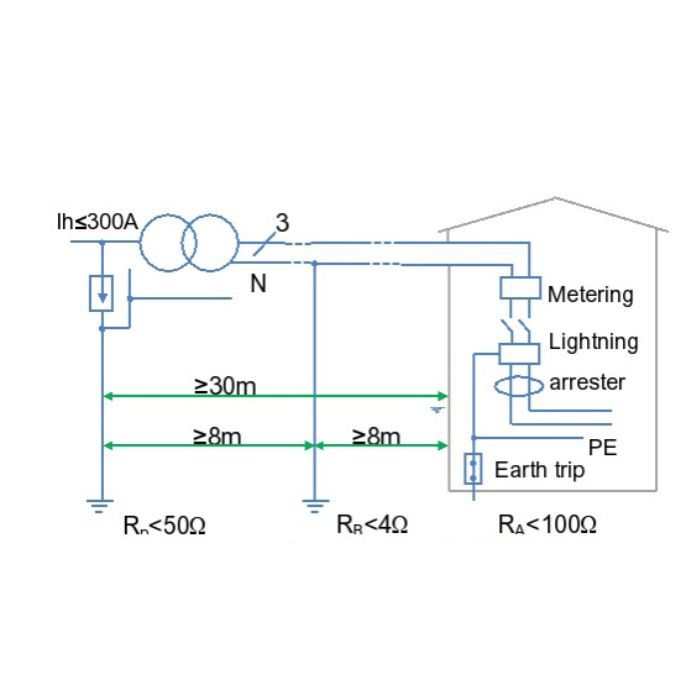5T- How to Design System Grounding in Low Voltage Electrical Systems
The objective of these three grounding systems is identical regarding protection of people and equipment - mastery of insulation fault effects. They are considered to be same with respect to safety of people against indirect contacts. Nevertheless, the same is not necessarily correct for dependability of the low voltage electrical installation with respect to:
- System availability
- Maintenance requirements
Overview
Commonly used system grounding types in low voltage systems are:
- Exposed-conductive parts connected to neutral –TN
- Grounded neutral –TT
- Ungrounded (or impedance-grounded) neutral –IT
Overview
Commonly used system grounding types in low voltage systems are:
- Exposed-conductive parts connected to neutral –TN
- Grounded neutral –TT
- Ungrounded (or impedance-grounded) neutral –IT
The objective of these three grounding systems is identical regarding protection of people and equipment - mastery of insulation fault effects. They are considered to be same with respect to safety of people against indirect contacts. Nevertheless, the same is not necessarily correct for dependability of the low voltage electrical installation with respect to:
- System availability
- Maintenance requirements
Quantities that can be calculated are subjected to increasingly exacting requirements in factories and buildings. Also, the control and monitoring equipment in buildings (electrical power distribution management systems) has an increasingly crucial role in management and dependability. These developments in dependability requirements impact the selection and design of system grounding. It needs to be kept in mind that the issue with service continuity (keeping a sound network in public distribution by disconnecting consumers with insulation faults) played a role when system grounding first emerged. This course is suitable for electrical engineers with a desire to understand theory and selection principles behind system grounding. Presented details cover issues related to technical implementation of different grounding methods used in low voltage electrical networks. Upon successful completion engineers will be able to address different grounding types used in low voltage networks, selection and operation methods and important considerations that need to be addressed when designing grounding of the low voltage systems.
| Learning Objectives | Specific Knowledge or Skill Obtained
|
|---|---|
| Contact Hours | 5 Horas |
| CIAPR courses | CURSO TECHNICO |
| Instructor | Lcda. Liana Colon Valentin |
| Devices | Desktop, Tablet, Mobile |
| Language | English |
Custom Tab Content
At vero eos et accusamus et iusto odio dignissimos ducimus qui blanditiis praesentium voluptatum deleniti atque corrupti quos dolores et quas molestias excepturi sint occaecati cupiditate non provident,
- Similique sunt in culpa qui officia deserunt mollitia animi.
- Nam libero tempore cum soluta nobis est.
- Itaque earum rerum hic tenetur a sapiente delectus ut aut reiciendis.
Custom Tab Content
Sed ut perspiciatis unde omnis iste natus error sit voluptatem accusantium doloremque laudantium, totam rem aperiam, eaque ipsa quae ab illo inventore veritatis et quasi architecto beatae vitae dicta sunt explicabo.
Nemo enim ipsam voluptatem quia voluptas sit aspernatur aut odit aut fugit, sed quia consequuntur magni dolores eos qui ratione voluptatem sequi nesciunt.




Validate your login
Sign In
Create New Account